Chrysler 2009 Annual Report Download - page 144
Download and view the complete annual report
Please find page 144 of the 2009 Chrysler annual report below. You can navigate through the pages in the report by either clicking on the pages listed below, or by using the keyword search tool below to find specific information within the annual report.-
 1
1 -
 2
2 -
 3
3 -
 4
4 -
 5
5 -
 6
6 -
 7
7 -
 8
8 -
 9
9 -
 10
10 -
 11
11 -
 12
12 -
 13
13 -
 14
14 -
 15
15 -
 16
16 -
 17
17 -
 18
18 -
 19
19 -
 20
20 -
 21
21 -
 22
22 -
 23
23 -
 24
24 -
 25
25 -
 26
26 -
 27
27 -
 28
28 -
 29
29 -
 30
30 -
 31
31 -
 32
32 -
 33
33 -
 34
34 -
 35
35 -
 36
36 -
 37
37 -
 38
38 -
 39
39 -
 40
40 -
 41
41 -
 42
42 -
 43
43 -
 44
44 -
 45
45 -
 46
46 -
 47
47 -
 48
48 -
 49
49 -
 50
50 -
 51
51 -
 52
52 -
 53
53 -
 54
54 -
 55
55 -
 56
56 -
 57
57 -
 58
58 -
 59
59 -
 60
60 -
 61
61 -
 62
62 -
 63
63 -
 64
64 -
 65
65 -
 66
66 -
 67
67 -
 68
68 -
 69
69 -
 70
70 -
 71
71 -
 72
72 -
 73
73 -
 74
74 -
 75
75 -
 76
76 -
 77
77 -
 78
78 -
 79
79 -
 80
80 -
 81
81 -
 82
82 -
 83
83 -
 84
84 -
 85
85 -
 86
86 -
 87
87 -
 88
88 -
 89
89 -
 90
90 -
 91
91 -
 92
92 -
 93
93 -
 94
94 -
 95
95 -
 96
96 -
 97
97 -
 98
98 -
 99
99 -
 100
100 -
 101
101 -
 102
102 -
 103
103 -
 104
104 -
 105
105 -
 106
106 -
 107
107 -
 108
108 -
 109
109 -
 110
110 -
 111
111 -
 112
112 -
 113
113 -
 114
114 -
 115
115 -
 116
116 -
 117
117 -
 118
118 -
 119
119 -
 120
120 -
 121
121 -
 122
122 -
 123
123 -
 124
124 -
 125
125 -
 126
126 -
 127
127 -
 128
128 -
 129
129 -
 130
130 -
 131
131 -
 132
132 -
 133
133 -
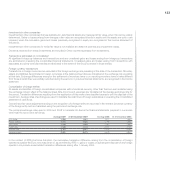 134
134 -
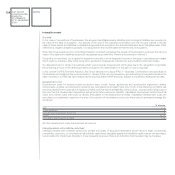 135
135 -
 136
136 -
 137
137 -
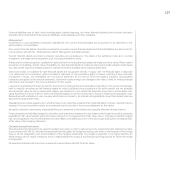 138
138 -
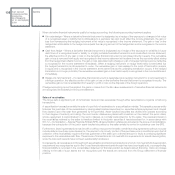 139
139 -
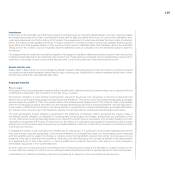 140
140 -
 141
141 -
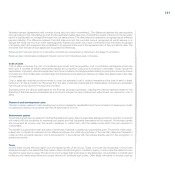 142
142 -
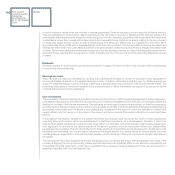 143
143 -
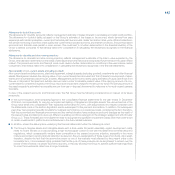 144
144 -
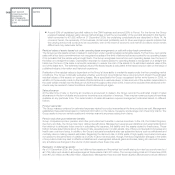 145
145 -
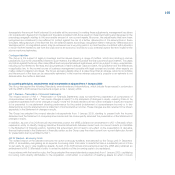 146
146 -
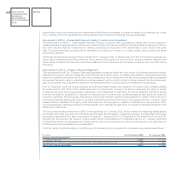 147
147 -
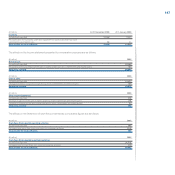 148
148 -
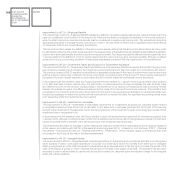 149
149 -
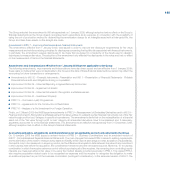 150
150 -
 151
151 -
 152
152 -
 153
153 -
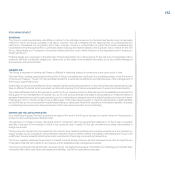 154
154 -
 155
155 -
 156
156 -
 157
157 -
 158
158 -
 159
159 -
 160
160 -
 161
161 -
 162
162 -
 163
163 -
 164
164 -
 165
165 -
 166
166 -
 167
167 -
 168
168 -
 169
169 -
 170
170 -
 171
171 -
 172
172 -
 173
173 -
 174
174 -
 175
175 -
 176
176 -
 177
177 -
 178
178 -
 179
179 -
 180
180 -
 181
181 -
 182
182 -
 183
183 -
 184
184 -
 185
185 -
 186
186 -
 187
187 -
 188
188 -
 189
189 -
 190
190 -
 191
191 -
 192
192 -
 193
193 -
 194
194 -
 195
195 -
 196
196 -
 197
197 -
 198
198 -
 199
199 -
 200
200 -
 201
201 -
 202
202 -
 203
203 -
 204
204 -
 205
205 -
 206
206 -
 207
207 -
 208
208 -
 209
209 -
 210
210 -
 211
211 -
 212
212 -
 213
213 -
 214
214 -
 215
215 -
 216
216 -
 217
217 -
 218
218 -
 219
219 -
 220
220 -
 221
221 -
 222
222 -
 223
223 -
 224
224 -
 225
225 -
 226
226 -
 227
227 -
 228
228 -
 229
229 -
 230
230 -
 231
231 -
 232
232 -
 233
233 -
 234
234 -
 235
235 -
 236
236 -
 237
237 -
 238
238 -
 239
239 -
 240
240 -
 241
241 -
 242
242 -
 243
243 -
 244
244 -
 245
245 -
 246
246 -
 247
247 -
 248
248 -
 249
249 -
 250
250 -
 251
251 -
 252
252 -
 253
253 -
 254
254 -
 255
255 -
 256
256 -
 257
257 -
 258
258 -
 259
259 -
 260
260 -
 261
261 -
 262
262 -
 263
263 -
 264
264 -
 265
265 -
 266
266 -
 267
267 -
 268
268 -
 269
269 -
 270
270 -
 271
271 -
 272
272 -
 273
273 -
 274
274 -
 275
275 -
 276
276 -
 277
277 -
 278
278 -
 279
279 -
 280
280 -
 281
281 -
 282
282 -
 283
283 -
 284
284 -
 285
285 -
 286
286 -
 287
287 -
 288
288 -
 289
289 -
 290
290 -
 291
291 -
 292
292 -
 293
293 -
 294
294 -
 295
295 -
 296
296 -
 297
297 -
 298
298 -
 299
299 -
 300
300 -
 301
301 -
 302
302 -
 303
303 -
 304
304 -
 305
305 -
 306
306 -
 307
307 -
 308
308 -
 309
309 -
 310
310 -
 311
311 -
 312
312 -
 313
313 -
 314
314 -
 315
315 -
 316
316 -
 317
317 -
 318
318 -
 319
319 -
 320
320 -
 321
321 -
 322
322 -
 323
323 -
 324
324 -
 325
325 -
 326
326 -
 327
327 -
 328
328 -
 329
329 -
 330
330 -
 331
331 -
 332
332 -
 333
333 -
 334
334 -
 335
335 -
 336
336 -
 337
337 -
 338
338 -
 339
339 -
 340
340 -
 341
341 -
 342
342 -
 343
343 -
 344
344 -
 345
345 -
 346
346 -
 347
347 -
 348
348 -
 349
349 -
 350
350 -
 351
351 -
 352
352 -
 353
353 -
 354
354 -
 355
355 -
 356
356 -
 357
357 -
 358
358 -
 359
359 -
 360
360 -
 361
361 -
 362
362 -
 363
363 -
 364
364 -
 365
365 -
 366
366 -
 367
367 -
 368
368 -
 369
369 -
 370
370 -
 371
371 -
 372
372 -
 373
373 -
 374
374
 |
 |

143
Allowance for doubtful accounts
The allowance for doubtful accounts reflects management estimate of losses inherent in wholesale and retail credit portfolio.
The allowance for doubtful debts is based on the Group’s estimate of the losses to be incurred, which derives from past
experience with similar receivables, current and historical past due amounts, dealer termination rates, write-offs and collections,
the careful monitoring of portfolio credit quality and current and projected economic and market conditions. Should the present
economic and financial crisis persist or even worsen, this could lead to a further deterioration in the financial situation of the
Group’s debtors compared to that already taken into consideration in calculating the allowances recognised in the financial
statements.
Allowance for obsolete and slow-moving inventory
The allowance for obsolete and slow-moving inventory reflects management’s estimate of the loss in value expected by the
Group, and has been determined on the basis of past experience and historical and expected future trends in the used vehicle
market. The present economic and financial crisis could cause a further deterioration in conditions in the used vehicle market
compared to that already taken into consideration in calculating the allowances recognised in the financial statements.
Recoverability of non-current assets (including goodwill)
Non-current assets include property, plant and equipment, intangible assets (including goodwill), investments and other financial
assets. Management reviews the carrying value of non-current assets held and used and that of assets to be disposed of when
events and circumstances warrant such a review. Management performs this review using estimates of future cash flows from
the use or disposal of the asset and suitable discount rate in order to calculate present value. If the carrying amount of a non-
current asset is considered impaired, the Group records an impairment charge for the amount by which the carrying amount of
the asset exceeds its estimated recoverable amount from use or disposal determined by reference to its most recent business
forecasts.
In view of the present economic and financial crisis, the Fiat Group has the following considerations in respect of its future
prospects:
In the current situation, when preparing figures for the consolidated financial statements for the year ended 31 December
2009 and more specifically for carrying out impairment testing of tangible and intangible assets, the various Sectors of the
Group have taken into consideration their expected performance for 2010, with assumptions and results consistent with
the statements made in the section Significant events subsequent to the year end and outlook. In addition, for subsequent
years they have prepared specific forecasts for business performance on a cautionary basis, considering the fact, therefore,
that the economical and financial environment and the market situation have undergone profound changes as the result of
the present crisis and taking into account different operating conditions arising from the strategic realignment with Chrysler
Group LLC. These forecasts did not indicate the need to recognise any significant impairment losses other than write-down
of certain investments in platforms and architectures in the Automobiles business.
In addition, should the assumptions underlying the forecast deteriorate further the following is noted:
The Group’s tangible assets and intangible assets with a finite useful life (which essentially regard development costs)
relate to recent models or products having a high technological content in line with the latest environmental laws and
regulations, which consequently renders them competitive in the present economic situation, especially in the more
mature economies in which particular attention is placed on the eco-sustainability of those types of products. As a result,
therefore, despite the fact that the automotive sector is one of the markets most affected by the present crisis in the
immediate term, it is considered highly probable that the life cycle of these products can be lengthened to extend over the
period of time involved in a slower economic recovery, in this way allowing the Group to achieve sufficient earnings flows
to cover the investments, albeit over a longer timescale.
